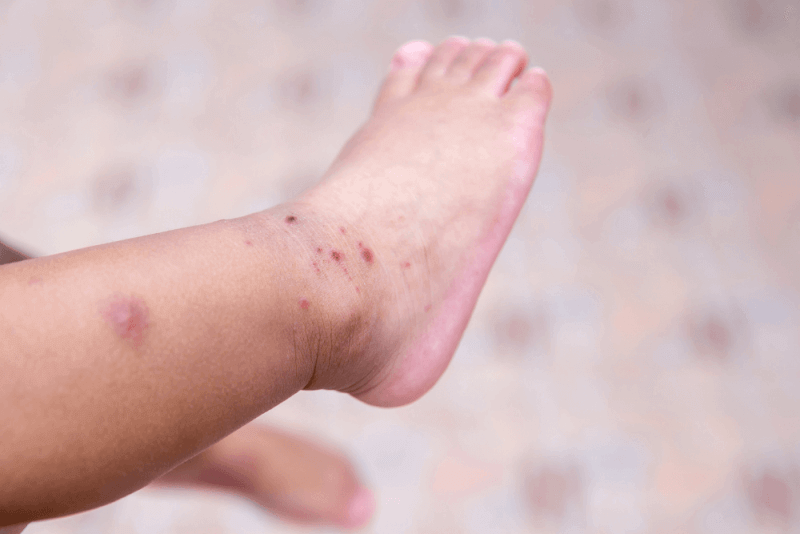What is Fabry Disease?
Fabry disease, a rare genetic disorder, occurs when there is a deficiency of a specific enzyme that breaks down fats. This enzyme, known as alpha-galactosidase A, is not produced in sufficient healthy forms in the body.
The enzyme's role in the body is to break down sphingolipids, a fat-like substance, and prevent it from accumulating in the blood vessels and tissues. In individuals with Fabry disease, sphingolipids accumulate in the blood vessels and tissues, affecting the heart, kidneys, brain, central nervous system, and skin.
Types of Fabry Disease
The types of Fabry disease reflect the age at which symptoms first appear and are divided into two categories.
Classic Type
In the classic type, symptoms of Fabry disease appear during childhood or adolescence. The most common symptom is a painful burning sensation in the hands and feet. This symptom can be noticed as early as age 2 and worsens over time.
Late-Onset/Atypical Type
Individuals with late-onset Fabry disease may not show symptoms until their 30s or older. The first symptom may be kidney failure or heart disease.
Fabry Disease Diagnostic Criteria
To diagnose Fabry disease, the following tests may be requested:
- Enzyme assays are performed to measure enzyme activity in the blood. A result of 1% or lower indicates the presence of the disease. However, this test is reliable only for males and AMAB individuals and is not suitable for females and AFAB individuals.
- Since males and AMAB individuals with Fabry disease may have normal levels of alpha-GLA enzyme activity, providers use genetic testing to identify the gene mutation.
- In some countries, newborn screenings are conducted to detect Fabry disease and other lysosomal storage disorders early.
Fabry Disease Symptoms
The symptoms of Fabry disease vary depending on its type. Some symptoms are mild and may not appear until later in life. Symptoms tend to be more severe in males and AMAB individuals compared to females and AFAB individuals. Possible symptoms of Fabry disease include:
- Numbness, tingling, burning, and pain in the hands and feet
- Severe pain during physical activities
- Intolerance to heat or cold
- Abnormal eye structure, detectable only with a slit-lamp eye exam, that does not affect vision
- Dizziness
- Flu-like symptoms, including fatigue, fever, and body aches
- Hearing loss
- Ringing in the ears
- Gastrointestinal problems, such as diarrhea, constipation, and abdominal pain
- High levels of protein in the urine
- Dark skin lesions on the chest, back, and genital area
- Hypohidrosis or lack of sweating
- Swelling in the legs, ankles, and feet
Causes of Fabry Disease
A genetic mutation in the GLA gene causes Fabry disease. The GLA gene is responsible for producing the alpha-GLA enzyme, which helps break down fatty substances. Individuals who inherit a defective GLA gene cannot produce enough alpha-GLA enzyme, resulting in the accumulation of fatty substances in the blood vessels.
Complications of Fabry Disease
The accumulation of fatty substances in the blood vessels over many years can damage the blood vessels, leading to life-threatening problems, including:
- Arrhythmia, heart failure, heart enlargement, and heart attack
- Kidney failure
- Nerve damage
- Strokes, including transient ischemic attacks
Treatment Methods for Fabry Disease
There is no cure for Fabry disease. However, medications for pain and gastrointestinal issues can help alleviate symptoms. Two different treatments for Fabry disease can slow down the formation of fatty substances to prevent heart problems, kidney disease, and other life-threatening complications.
Enzyme Replacement Therapy
In this treatment, patients receive an intravenous infusion of a lab-made enzyme similar to the missing alpha-GAL enzyme every two weeks. These replacement enzymes perform the job of the missing alpha-GLA enzyme, preventing the accumulation of fatty substances in the blood vessels.
Antihistamines and other medications may be needed before treatment to prevent an allergic reaction. Infusions are usually given in healthcare centers. If the patient tolerates the infusions well, they can be administered at home.
Oral Chaperone Therapy
Chaperones are small molecules that repair defective alpha-GLA enzymes. The repaired enzymes can then break down fatty substances. In this treatment, patients take a pill every other day to stabilize the defective alpha-GLA enzyme. However, not every patient is suitable for this therapy. Genetic testing of the specific mutation in the GLA gene is necessary to determine eligibility for this treatment.
Is Fabry Disease Fatal?
Fabry disease itself is not fatal, but the complications it causes, such as heart disease, kidney disease, and nervous system disorders, can be life-threatening.
What is Neurological Involvement in Fabry Disease?
In Fabry disease, damage occurs in the peripheral nerve fibers and neuronal cells in the autonomic nerve endings. This condition typically presents as the first symptom of the disease, causing neuropathic pain during childhood.







